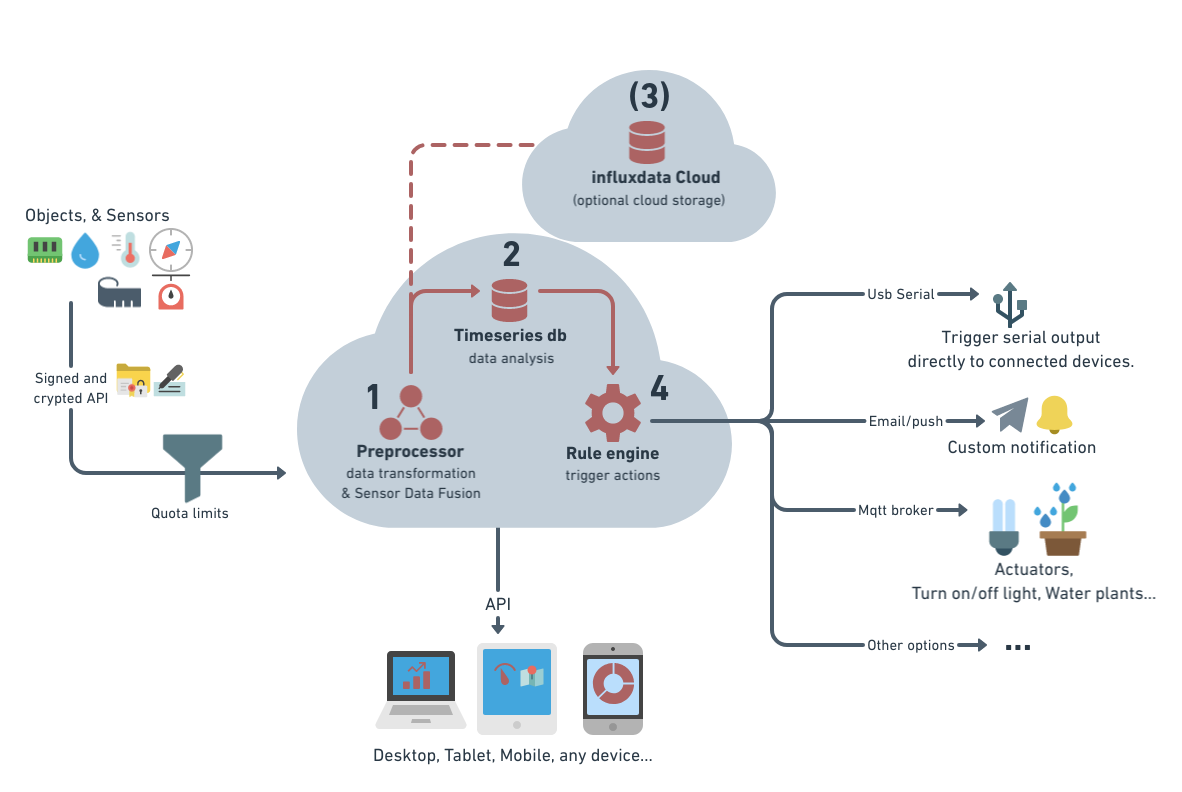t6 - Connect your devices, and let them speak
t6 is a "Data-first" IoT platform to connect physical Objects with time-series DB and perform Data Analysis.

This image indicates how Datapoints are going through the IoT platform.
6 main Resources
- Objects that represent your physical devices.
- Flows that contains a serie of measures and customize signature + encryption.
- Dashboards to visualize your important measures.
- Snippets inside Dashboards to visualize and graph your data measures.
- Decision Rules to trigger actions based on rules.
- Sources & Over The Air (OTA) to control your physical Objects.
1 Preprocessor during Data-Acquisition
Preprocessor aims to transform incoming Datapoints before any other rules. Preprocessor is having multiple layers in the following sequence:
- The transormation layer and/or validation layer and/or convertion layer are consolidating the value based on combinable rules ;
- This transformation layer is capable of Automatic identification and data capture (AIDC) to detect faces and recognize expressions over images. (beta)
- Then, Sanitize processors is making sure value is having the correct Data-Types ;
- And finally, Sensor Data Fusion is combining multiple tracks into one Primary Flow using algorithms ;
More details on Data-Acquisition, Preprocessor and Sensor Data Fusion.
2 Timeseries Db
This timeserie is the main storage of each Datapoints coming into t6.
Every series in Database is having its own Data-Types according to the measurements you needs. And Data storage remain an option on t6 in case you are mainly expecting to trigger actions from rules, you just need to explicitly tell t6 to save: false on the Payload.
3 (optional) InfluxData Cloud
An additional Data storage is available (as beta) and allows to store your measurements onto a secondary tsDb. The setting can be set directly on the Flow or from the Payload when adding new Datapoint. Beta here means it has only been tested on the InfluxData Cloud storage. More details on InfluxData Cloud Storage.
4 Rule Engine & Outputs
The concept behind Decision Rule is simply to trigger actions based on values measured. Several Rules can be triggered from a single measurement - using an ordered sequence. Rules can also be used on Data-annotation context to classify datapoints. More details on Decision Rule.
5 Data Analysis
t6 is mostly dedicated on Data. This tools provide interfaces to summarize main characteristics from Datapoints. More details on Exploratory Data Analysis. Some additonal analysis might come later using Data-annotation and labelling feature.